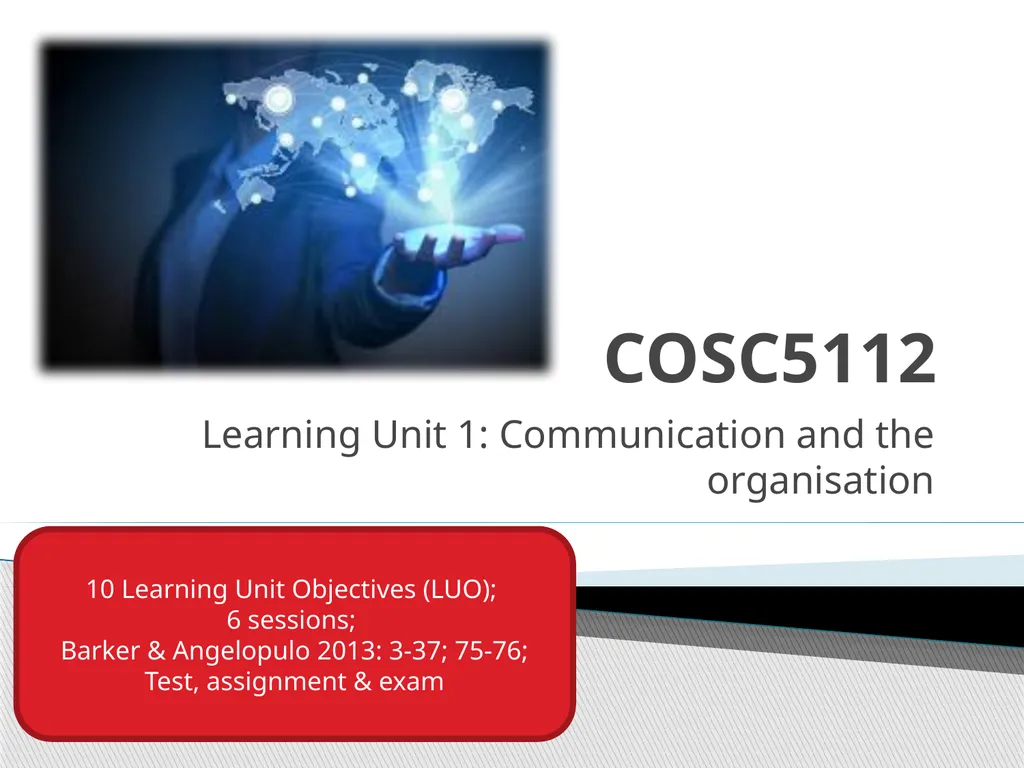
COSC5112 Learning Unit 1: Communication and the
Author: faustina-dinatale | Published: 2025-05-29
Description: COSC5112 Learning Unit 1: Communication and the organisation 10 Learning Unit Objectives (LUO); 6 sessions; Barker Angelopulo 2013: 3-37; 75-76; Test, assignment exam 1 The Mechanistic and Interactional view of communication - Barker
Download Presentation
Download the PPT/PDF: Download
Transcript:
Loading transcript…